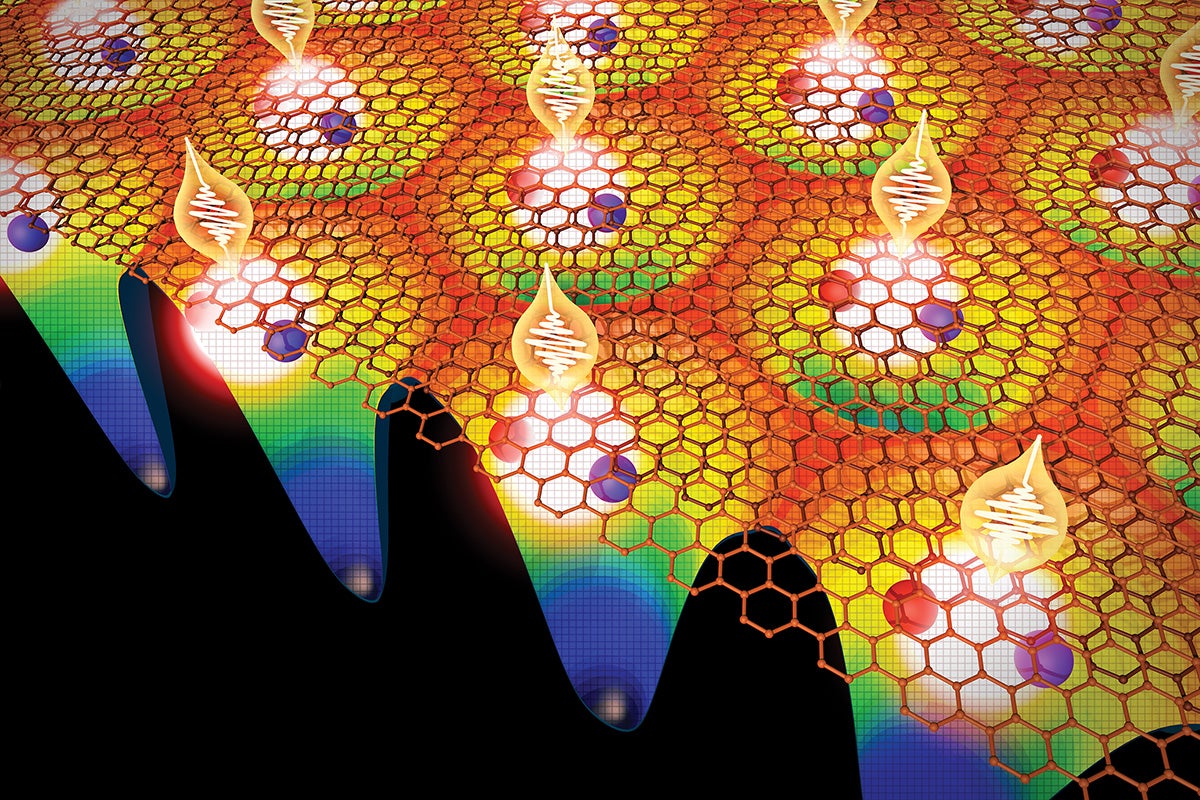New Model Could Yield Clues about Diseases Related to Chromosome Packing
The most accurate quantitative model yet for understanding the role of condensin during cell division is also visually stunning.
A team of scientists from UT Austin have developed the most accurate quantitative model yet simulating how chromosomes in our cells are packed up before the cells divide, a tool they said could lead to new insights into the causes of diseases and potential treatments.
Their paper was published in the journal Cell Reports.
Condensin is a molecular machine involved in packing and unpacking chromosomes. When properly functioning, it plays an important role in early development of any living thing. Some mutations, however, can lead to various forms of cancer, most commonly T-cell lymphoma.
“This is the first theoretical study of how condensins fold the mitotic chromosomes that agree with all available experimental data,” said Atreya Dey, leading author and a Ph.D. student in the lab of chemist Dave Thirumalai, referring to the compact form of chromosomes that are ready for cell division. “We hope that these findings will inspire experimentalists to test our predictions.”
Previous research determined condensin’s involvement in the chromosome structure during cell division. In 2021, the Thirumalai lab learned how a single condensin protein works to fold a small part of the genome. But, the full picture of condensin’s contribution to cell division wasn’t fully understood, which points to the value of the new model.
The familiar DNA helix in an unpacked chromosome looks like a ladder that twists in one direction. In the new model, when a chromosome is compacted, there are many places where the helix reverses direction, like kinks in an old fashioned telephone cord. These so-called random helix perversions are so abundant in a packed chromosome that the helix is no longer discernible. The new model suggests one form of condensin forms more of these kinks than a second form, a prediction which can be tested by future experiments.
Earlier experiments had showed that condensin reels in the chromosome, scrunching sections up into thousands of loops, causing the chromosome to look less like a long, straight noodle and more like a dense ball of spaghetti. The new model adds more details for future tests: the rate of this looping process was found to be slower at first and increasing as the chromosomes align in the center of the cell before being separated into each of the two daughter cells. It also finds a difference in the sizes of loops produced by two different versions of condensin, with the version known as condensin II generating loops six times larger than the ones from condensin I.
This all matters because understanding condensin behavior could lend insights that will prove important one day for the development of preventative or therapeutic technology and medicine against diseases, like cancer or Down’s syndrome.
“Not only is it visually inspiring to actually see the molecule we are working with, but it is also necessary for comparing the theory with experimental data,” Dey said.


